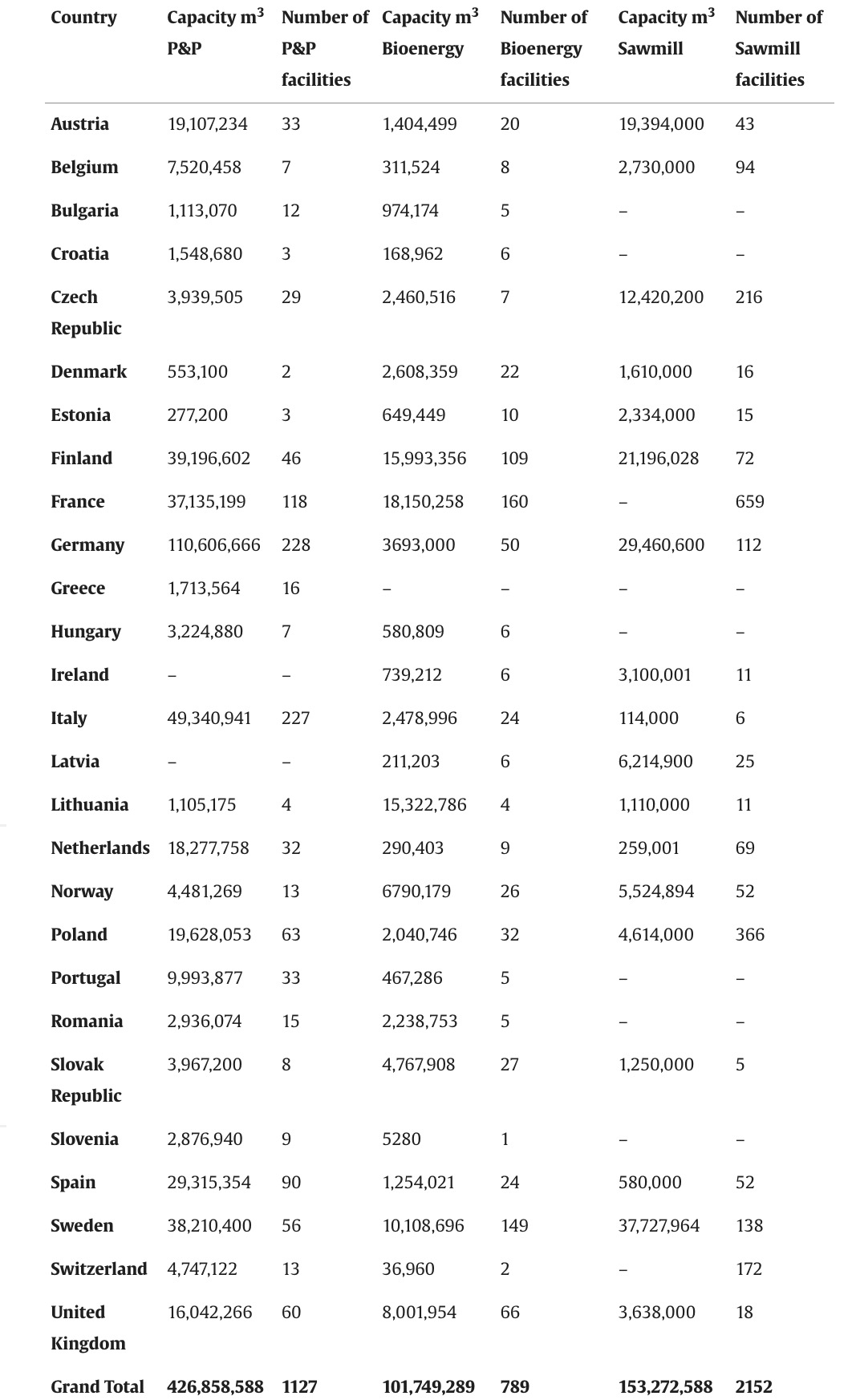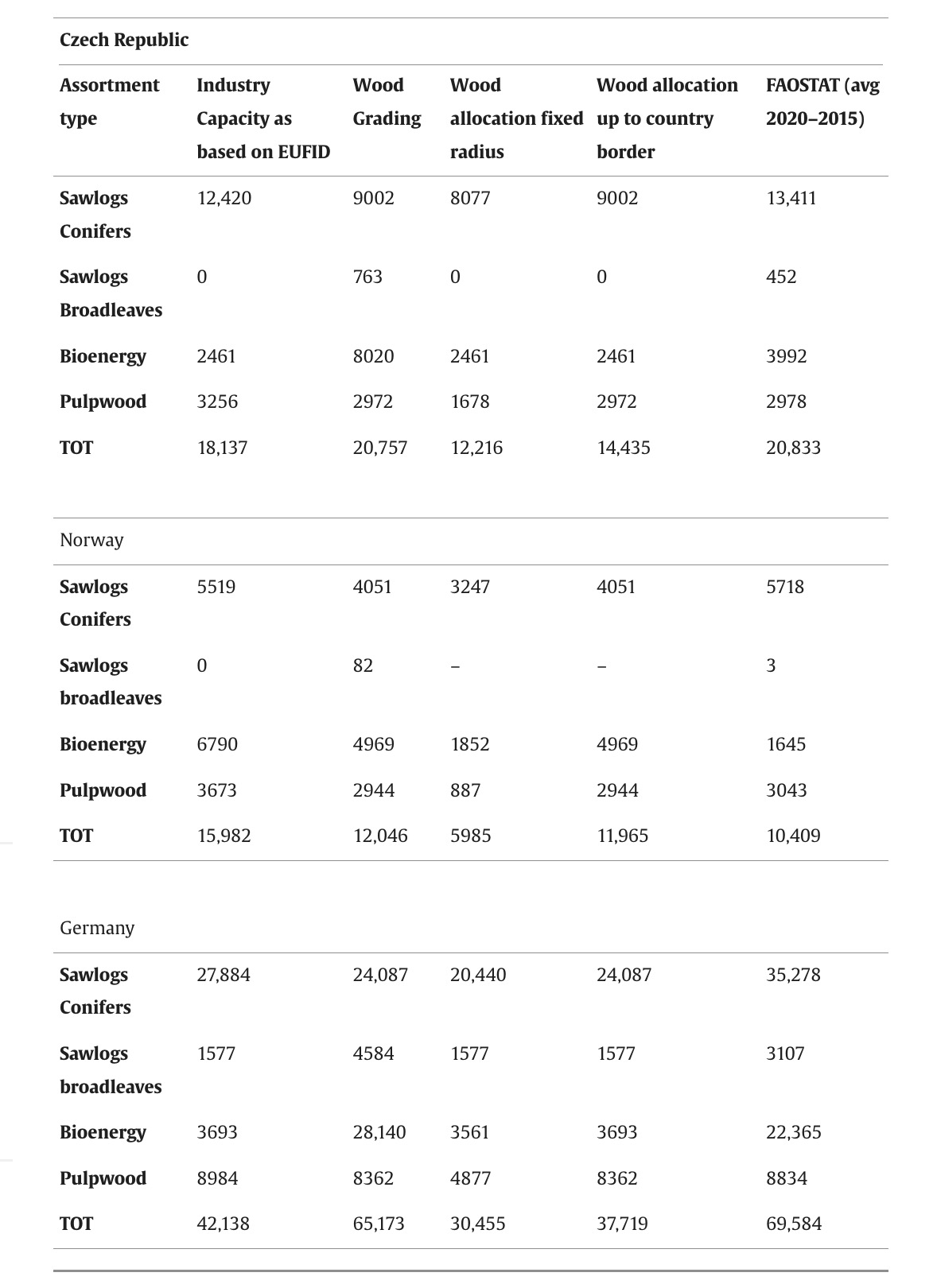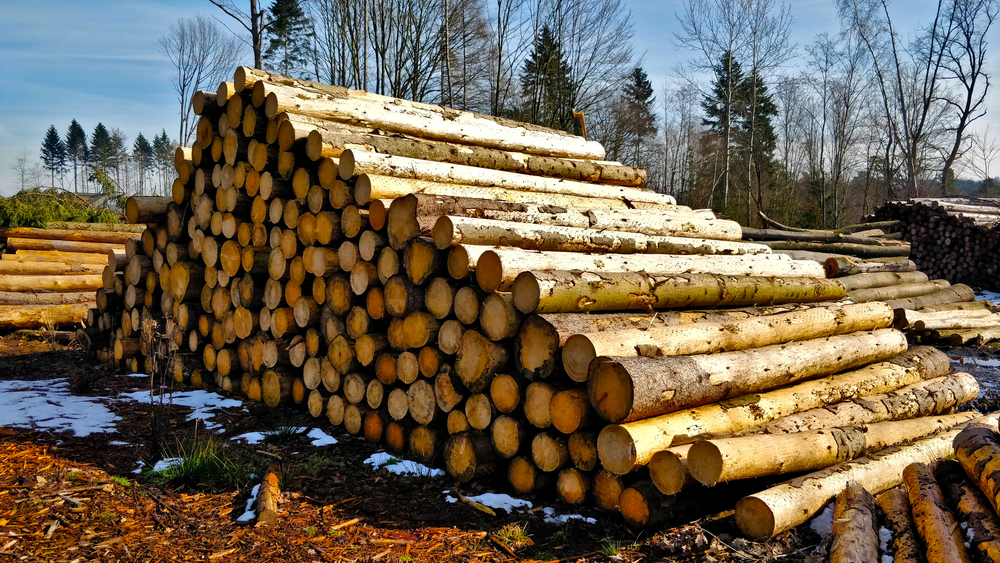A recent in-depth study, “Preliminary Evidence of Softwood Shortage and Hardwood Availability in EU Regions,” has shed light on significant supply imbalances within Europe’s forest-based bioeconomy. Researchers from Wageningen University, the European Commission’s Joint Research Centre, and other institutions analyzed data from the European Forest Industry Database (EUFID), revealing critical mismatches between wood resources and processing capacities across European countries. The study findings suggest that while Europe’s forestry infrastructure is vast, it may not be fully aligned with current and future wood demands.
EUFID data points to substantial processing capacities across Europe, with pulp and paper facilities holding a capacity of 427 million m3, bioenergy plants at 102 million m3, and sawmills at 153 million m3. However, regional assessments in Germany, Norway, and the Czech Republic indicate looming shortfalls in softwood availability, crucial for the sawmill and bioenergy industries. Specifically, the Czech Republic is experiencing a softwood shortage of 3.4 million m3, Norway 1.5 million m3, and Germany 3.8 million m3. Conversely, Germany shows an oversupply of hardwood, estimated at 3 million m3, which researchers suggest could support an expansion in hardwood processing operations. Image: Capacities (cubic meters of roundwood) and number of facilities per country. For pulp and paper, the list does not distinguish between raw and recycled materials. For bioenergy, the list reports the capacities of industrial bioenergy plants using woody biomass as feedstock. The capacity of sawmills is not available for Switzerland and France. (See Annex C for further details and data sources).
Regional wood supply gaps
In Germany, sawmills and bioenergy plants face a complex situation. With a processing capacity of approximately 42.1 million m3, Germany has a notable 65.2 million m3 of graded wood available, indicating an overall surplus. However, the breakdown shows a softwood deficit in the sawmill sector, offset by a hardwood surplus. The bioenergy industry recorded a nominal capacity of 3.7 million m3, in contrast with a total graded wood capacity of 28 million m3, which includes a significant volume of biomass designated for household fuelwood.
For Norway, the study revealed that softwood supplies fall short of demand in the sawmill and pulpwood sectors. Despite a total industry capacity of 16 million m3, only 12.1 million m3 of graded wood is available, meeting just 75% of industry needs. The pulp and bioenergy industries, in particular, require wider procurement areas; the current model using a fixed 100 km radius leaves around half of Norway’s bioenergy capacity unmet, pointing to logistical challenges due to regional distribution of facilities, especially in remote northern areas.
In the Czech Republic, sawmills have an industrial capacity of 12.4 million m3, yet only 9 million m3 of graded conifer logs are available, resulting in a significant softwood deficit. The bioenergy sector shows a disparity as well, with a 2.5 million m3 capacity against an 8 million m3 graded wood supply. This situation, compounded by forest disturbances like the bark beetle infestation, suggests that Czech sawmills may struggle to secure raw materials, as spruce tree availability continues to drop. Image: Summary wood allocation per country. Values reported are in 1000 m3. Industry capacity: nominal capacity of the mills as based on our own industry database EUFID; Wood grading: amount of wood graded per assortment as based on EFISCEN-space forest resource data; Wood allocation fixed radius: amount of wood delivered to the facility using a fixed radius of 100 km; Wood allocation c.b: amount of wood delivered to the facility using country borders as maximum radius; FAOSTAT: averaged production values from 2015 to 2020.
Wood procurement challenges highlight need for expanded sourcing areas
A primary conclusion of the study is the significant effect of a limited procurement radius on wood supply. The analysis utilized a 100 km procurement radius, finding that bioenergy and pulp industries often require larger sourcing areas due to high demand. Researchers observed that if facilities were allowed to procure wood across entire national boundaries, material shortages would decrease. In Germany, for instance, expanding the radius to country borders would raise sawmill utilization to 90%, compared to only 72% within a 100 km range.
In addition, Germany and the Czech Republic exhibited higher wood use in central regions, particularly in areas surrounding economic hubs like Berlin and Prague. By contrast, Norway’s wood consumption remained concentrated around the Oslo area, with minimal use in more remote regions.
The report advocates for more efficient regional wood distribution models and broader sourcing strategies. The bioeconomy-driven rise in wood demand could exacerbate shortages if current capacities remain unchanged. Bioenergy, which now competes with traditional wood product sectors for raw materials, may face intensified competition without expanded sourcing basins. Researchers suggest that industries may need to consider more extensive procurement logistics, incorporating transportation infrastructure beyond road networks, such as rail and river routes, to optimize raw wood distribution.
The authors also call for policies that balance bioeconomic growth with forest conservation, noting the long-term impact of forest degradation. “These findings highlight the critical need to align wood resources with industry capacities, especially as Europe transitions towards a bioeconomy that emphasizes renewable and locally sourced materials,” the authors note, stressing that accurate resource projections are essential for sustainable industry growth.
With the potential for wider implementation, the EUFID model offers policymakers and industry stakeholders a framework for spatial analysis of wood resources, allowing for tailored strategies in forest resource management. This model could support strategic decisions such as the establishment of new facilities, resource optimization for existing facilities, and the identification of potential set-aside regions for forest conservation.
